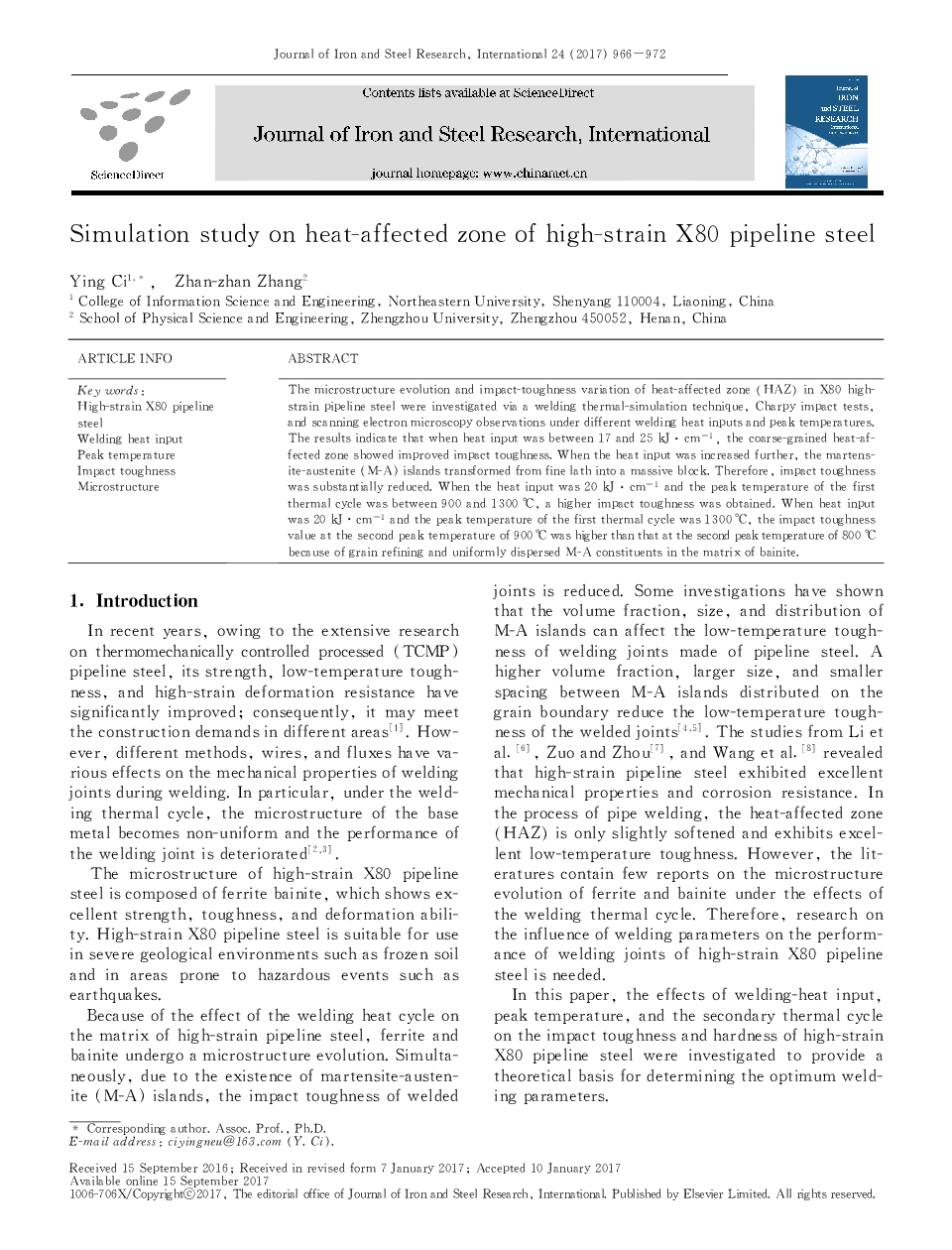| Article ID | Journal | Published Year | Pages | File Type |
|---|---|---|---|---|
| 8004206 | Journal of Iron and Steel Research, International | 2017 | 7 Pages |
Abstract
The microstructure evolution and impact-toughness variation of heat-affected zone (HAZ) in X80 high-strain pipeline steel were investigated via a welding thermal-simulation technique, Charpy impact tests, and scanning electron microscopy observations under different welding heat inputs and peak temperatures. The results indicate that when heat input was between 17 and 25 kJ · cm-1, the coarse-grained heat-affected zone showed improved impact toughness. When the heat input was increased further, the martensite-austenite (M-A) islands transformed from fine lath into a massive block. Therefore, impact toughness was substantially reduced. When the heat input was 20 kJ · cm-1 and the peak temperature of the first thermal cycle was between 900 and 1300 °C, a higher impact toughness was obtained. When heat input was 20 kJ · cm-1 and the peak temperature of the first thermal cycle was 1300 °C, the impact toughness value at the second peak temperature of 900 °C was higher than that at the second peak temperature of 800 °C because of grain refining and uniformly dispersed M-A constituents in the matrix of bainite.
Related Topics
Physical Sciences and Engineering
Materials Science
Metals and Alloys
Authors
Ying Ci, Zhan-zhan Zhang,
